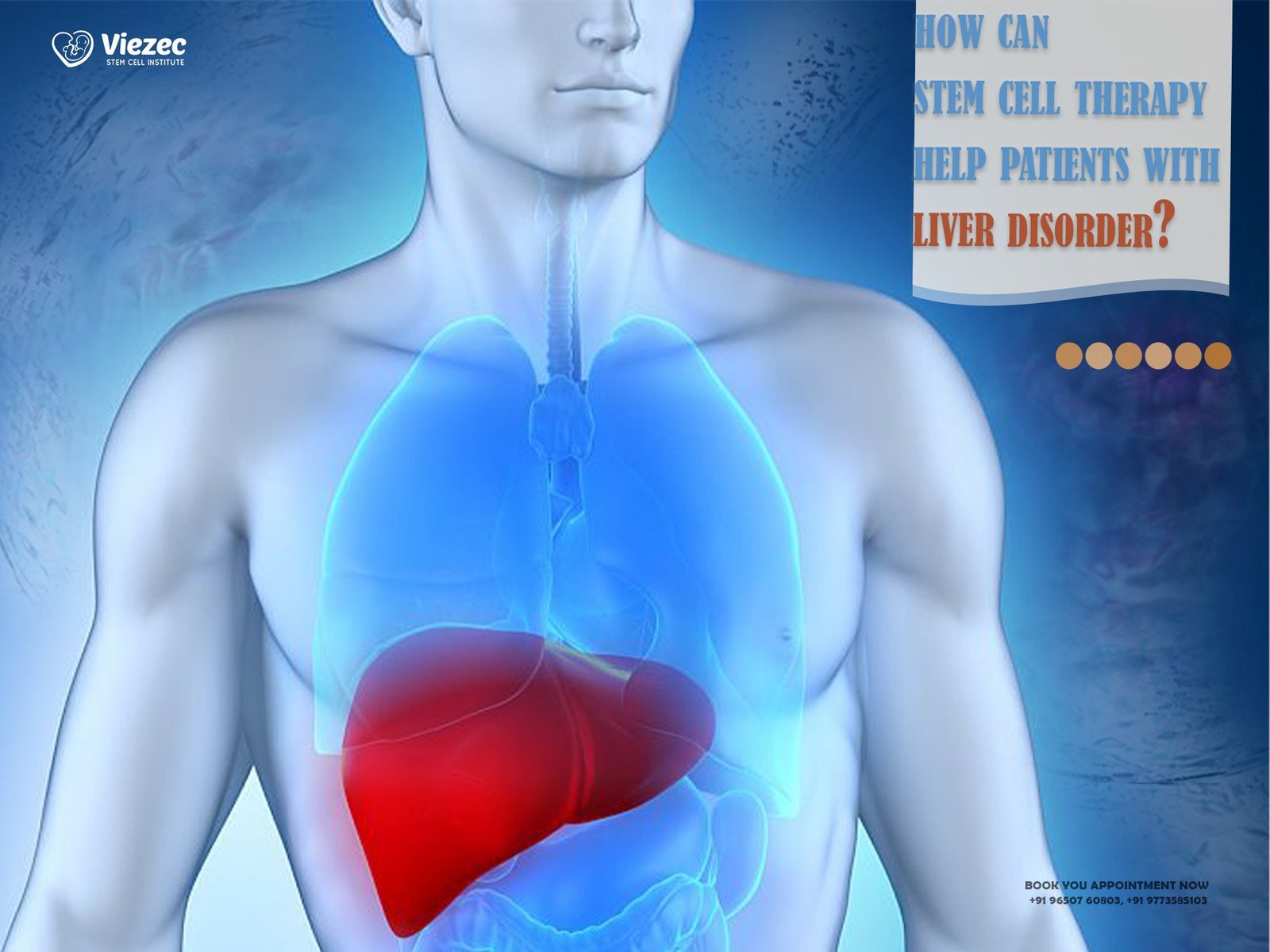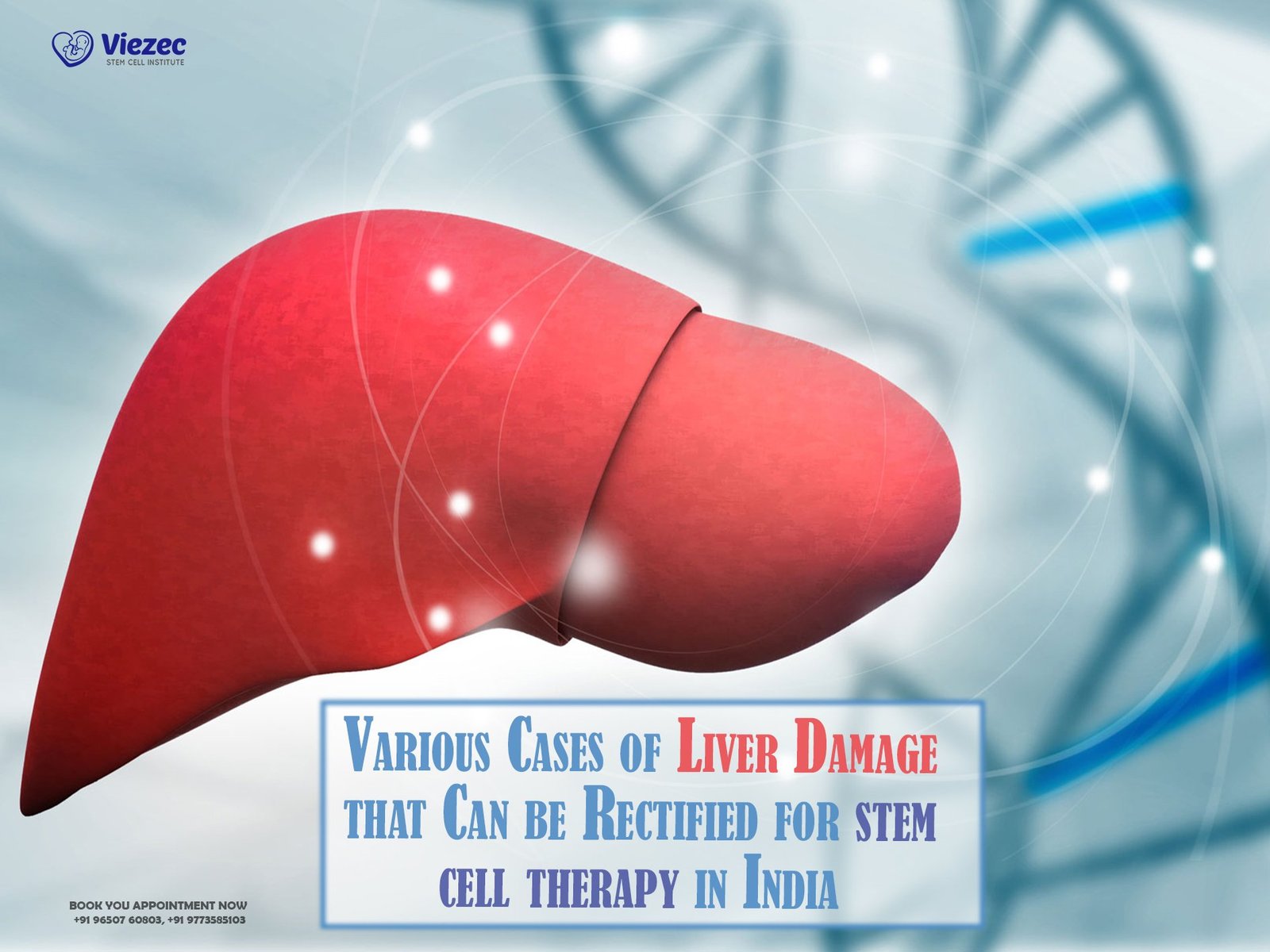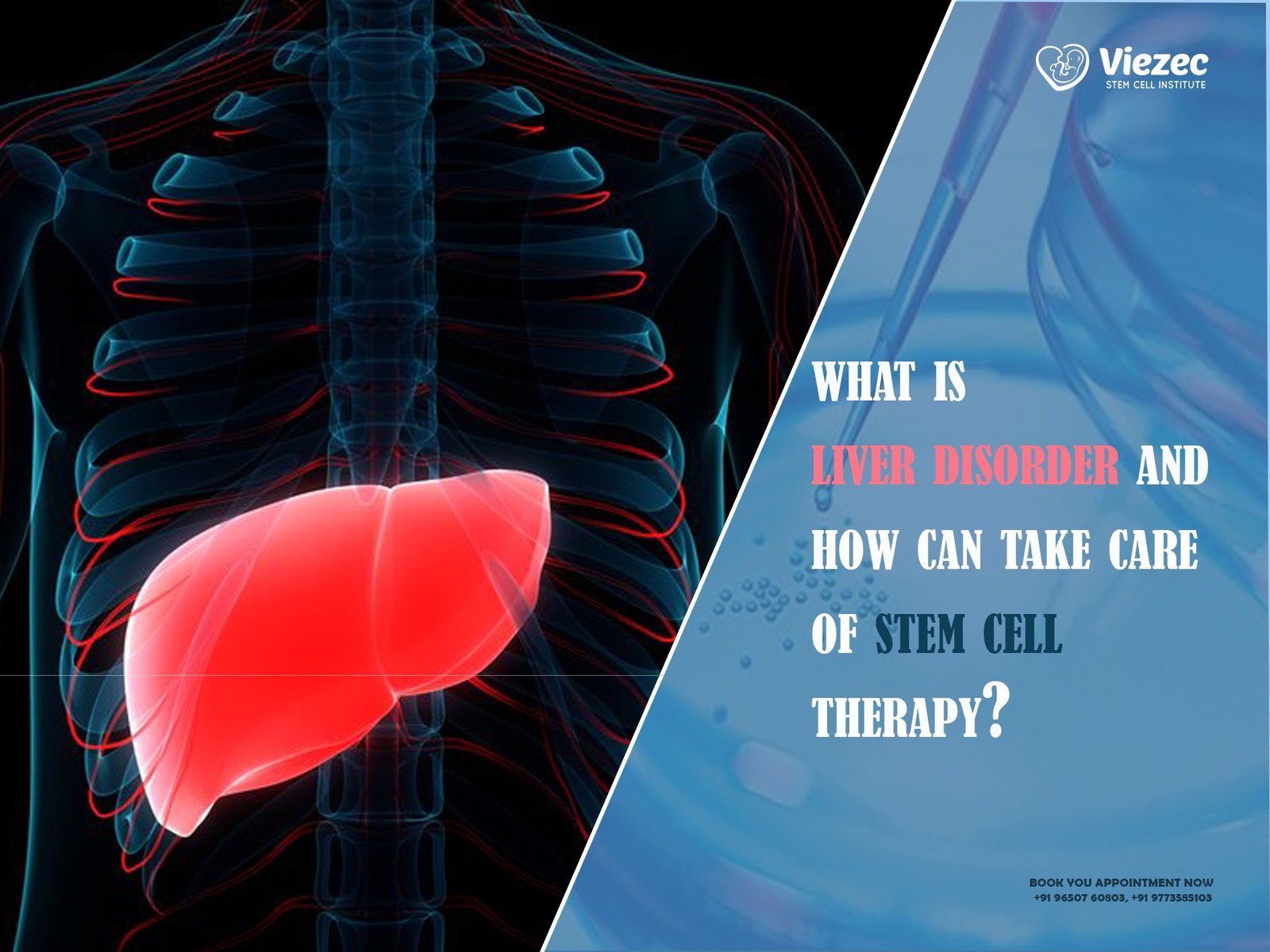This comprehensive article explores the transformative potential of stem cell therapy in the treatment of liver disorders. From fatty liver disease to cirrhosis and hepatitis, the article dives into the science behind stem cells and their ability to regenerate liver tissue, reduce inflammation, and slow disease progression.
It provides an in-depth look at the types of stem cells most commonly used in liver therapies, such as Mesenchymal Stem Cells (MSCs) and Induced Pluripotent Stem Cells (iPSCs). It also highlights the benefits of stem cell therapy, including minimally invasive treatment alternatives to liver transplants, and reduced risk of organ rejection.
Clinical evidence and success stories from around the world underscore the growing effectiveness of stem cell-based treatments for liver diseases, while the article also explains what patients can expect during the treatment process—from pre-treatment evaluations to post-treatment care.
The article concludes by addressing the future of liver treatment with regenerative medicine, emphasizing groundbreaking innovations such as 3D bioprinting of liver tissue and the possibility of stem cells replacing liver transplants in the years to come.
Whether you’re considering stem cell therapy for yourself or seeking to understand this cutting-edge treatment, this article offers a clear, accessible guide to one of the most exciting advancements in modern medicine.
Understanding Liver Disorders and Their Impact
Common Types of Liver Diseases
Fatty Liver Disease
Fatty liver disease occurs when excess fat accumulates in the liver. It’s especially common among individuals with obesity, insulin resistance, or high alcohol intake. While often symptomless in early stages, untreated fatty liver can progress to inflammation (steatohepatitis), fibrosis, or even cirrhosis over time.
Hepatitis B & C
These are viral infections that cause ongoing liver inflammation. Chronic hepatitis B or C can silently damage liver cells for years, ultimately leading to scarring (fibrosis), cirrhosis, or liver cancer. Worldwide, these infections remain major contributors to liver-related deaths.
Cirrhosis
Cirrhosis is the result of long-term liver damage. Over time, healthy liver tissue is replaced by scar tissue, disrupting normal liver function. Common causes include chronic hepatitis, alcohol abuse, and untreated fatty liver. Cirrhosis increases the risk of liver failure and cancer, and in many cases, a transplant is the only solution.
Liver Fibrosis
Fibrosis is the early stage of liver scarring. It begins when chronic inflammation triggers the buildup of collagen and connective tissue. If detected early, fibrosis can sometimes be reversed. But without intervention, it progresses to cirrhosis.
Symptoms and Complications to Watch For
Jaundice, Fatigue, Swelling
Liver disorders often show subtle signs at first. Yellowing of the skin and eyes (jaundice), persistent fatigue, abdominal bloating, and swelling in the legs (edema) may indicate liver dysfunction. These symptoms arise from the liver’s reduced ability to filter toxins and regulate fluids.
Risk of Liver Failure or Cancer
When liver damage becomes extensive, the organ struggles to perform its essential functions. This can result in acute or chronic liver failure. In advanced stages, many liver disorders—especially hepatitis and cirrhosis—can increase the risk of hepatocellular carcinoma (liver cancer), which can be life-threatening.
Introduction to Stem Cell Therapy
What Are Stem Cells?
Stem cells are the body’s master cells—capable of transforming into various types of specialized cells, such as liver, nerve, or blood cells. Think of them as the body’s natural repair system. Unlike most cells that serve a fixed purpose, stem cells are adaptable and regenerative. This remarkable ability makes them vital in healing and rebuilding damaged tissues.
There are several types of stem cells, but the ones most commonly used in regenerative medicine are mesenchymal stem cells (MSCs) and induced pluripotent stem cells (iPSCs). Their versatility and healing potential have made them central to modern advances in treating complex chronic diseases.
How Do They Work in Medical Treatments?
In regenerative therapies, stem cells act like biological repair crews. When introduced into the body, they seek out damaged areas—like an inflamed or scarred liver—and begin their healing work. Here’s how they help:
-
Tissue regeneration: Stem cells can develop into hepatocyte-like cells, which are crucial for restoring liver function.
-
Immunomodulation: They calm the immune system’s overactive response, which often contributes to chronic inflammation in liver disease.
-
Secretion of healing factors: Even if stem cells don’t fully integrate, they release growth factors and cytokines that stimulate nearby cells to repair themselves.
This natural, targeted, and multifaceted healing process makes stem cell therapy a powerful and evolving solution for patients with liver disorders.
Ready to Improve Your Liver Health?
Our stem cell therapy offers a revolutionary approach to treating liver disorders. Book your appointment today to take the first step towards recovery.
How Stem Cell Therapy Supports Liver Repair
Regenerating Damaged Liver Cells
Stimulating Hepatocyte Regeneration
One of the most exciting roles of stem cells in liver therapy is their ability to become hepatocyte-like cells—the primary functional cells of the liver. These cells are responsible for detoxifying the blood, producing essential proteins, and supporting digestion. When stem cells are introduced into the body, they can differentiate into these hepatocyte-like cells, helping to restore liver structure and function.
Reducing Liver Inflammation and Fibrosis
Chronic liver disease often involves inflammation and scarring (fibrosis). Stem cells naturally secrete anti-inflammatory molecules that calm the immune response. They also inhibit the activation of hepatic stellate cells, which are largely responsible for producing scar tissue. This helps in slowing or even reversing fibrosis, giving the liver a chance to heal.
Slowing Disease Progression
Preventing Further Tissue Damage
By reducing inflammation and halting the fibrotic process, stem cell therapy helps protect what’s left of the healthy liver. This not only improves quality of life but also delays the need for more invasive interventions, such as a transplant.
Enhancing Liver Function Over Time
Many patients experience a gradual yet noticeable improvement in liver function after stem cell treatment. Lab tests often show better liver enzyme levels, while symptoms like fatigue and swelling may diminish. The long-term benefit? A stronger liver that continues to function with fewer complications.
Best Stem Cell Types for Liver Disorder Treatment
Mesenchymal Stem Cells (MSCs)
Mesenchymal stem cells, or MSCs, are among the most widely studied and commonly used stem cells for liver therapy. They are sourced from bone marrow, adipose (fat) tissue, and umbilical cord tissue—each offering high regenerative potential with minimal risk of rejection.
Why MSCs are preferred in liver treatment:
-
Immunomodulatory abilities: MSCs help regulate the body’s immune response, which is critical in liver diseases involving inflammation or autoimmunity.
-
Low risk of rejection: MSCs are less likely to trigger immune rejection, even when derived from donors.
-
Tissue repair: They can transform into hepatocyte-like cells and support liver regeneration by releasing healing signals that promote tissue recovery.
Induced Pluripotent Stem Cells (iPSCs)
iPSCs are lab-engineered cells created by reprogramming adult cells (like skin or blood cells) to return to a pluripotent, or ‘embryonic-like’, state. This gives them the ability to develop into nearly any cell type in the body—including liver cells.
Key advantages of iPSCs in liver treatment:
-
Customizable for the patient: iPSCs can be derived from a patient’s own cells, drastically reducing the risk of immune rejection.
-
Unlimited expansion potential: They can be grown in large quantities in labs, making them a scalable option for future therapies.
-
Promising research: While still largely in the experimental phase for liver disease, iPSCs hold immense promise for personalized regenerative medicine.
Benefits of Stem Cell Therapy for Liver Patients
Minimally Invasive Alternative to Transplants
For many patients, a liver transplant is considered the last resort—but it comes with challenges: long wait times, surgical risks, and lifelong immunosuppressant use. Stem cell therapy, on the other hand, offers a non-surgical, minimally invasive alternative that may help restore liver function and delay or even eliminate the need for a transplant in some cases.
Reduced Risk of Organ Rejection
One of the most compelling advantages of stem cell therapy—especially when using autologous cells (from the patient’s own body)—is the significantly reduced risk of immune rejection. Even when donor-derived stem cells are used (like from umbilical cord MSCs), their low immunogenicity makes rejection rare, removing one of the biggest concerns associated with organ-based treatments.
Natural Healing Without Harsh Medications
Many conventional liver treatments rely on long-term drug therapies, which can carry side effects like fatigue, digestive issues, or further liver stress. Stem cell therapy works differently—it activates the body’s own healing mechanisms, helping to repair and regenerate without the need for heavy pharmaceutical regimens. For patients seeking a gentler yet effective alternative, this natural approach offers real hope.
Have Questions About Stem Cell Therapy?
Get in touch with us today to learn more about how stem cell therapy can help with liver disorders.
Clinical Evidence and Success Stories
Notable Case Studies
Real-world case studies provide encouraging insight into how stem cell therapy can help patients with liver disorders. For instance, patients with decompensated cirrhosis treated with mesenchymal stem cells have shown measurable improvements in liver function, including reduced bilirubin levels, lower inflammation markers, and improved albumin production—all signs of enhanced liver performance.
In several studies, individuals who were once on the transplant list experienced such significant recovery that they were no longer in immediate need of a new liver. These outcomes, while not guaranteed for everyone, suggest that stem cell therapy can meaningfully reverse or stabilize liver damage in select patients.
Research Findings from Global Trials
The global medical community continues to explore the effectiveness of stem cell therapy in liver care through clinical trials:
-
A phase II clinical trial in China demonstrated that patients with hepatitis B-related cirrhosis showed marked improvement in liver function scores after MSC therapy.
-
In Europe, trials on patients with alcoholic cirrhosis showed improved liver regeneration and decreased fibrosis markers.
-
U.S. researchers are investigating the use of iPSC-derived hepatocyte cells in early-phase clinical trials, exploring their potential to replace damaged liver tissue long-term.
Though stem cell therapy is still classified as experimental in many countries, the growing body of evidence suggests it is safe, well-tolerated, and promising—especially when used as part of a comprehensive treatment plan.
Treatment Process – What Patients Should Expect
Pre-Treatment Evaluation and Scans
Before undergoing stem cell therapy, every patient goes through a thorough medical evaluation. This usually includes:
-
Blood tests to assess liver enzyme levels and overall organ function
-
Imaging tests such as ultrasound, CT scan, or MRI to examine liver structure and detect fibrosis or cirrhosis
-
In some cases, a liver biopsy may be recommended to determine the extent of liver damage
These evaluations help the medical team customize the stem cell therapy plan to match the patient’s unique condition and goals.
Stem Cell Administration Methods
Once a patient is deemed eligible, stem cells can be administered using one of two main approaches:
Intravenous (IV) Infusion
This is the most commonly used method. Stem cells are delivered through a standard IV drip, allowing them to circulate through the bloodstream and reach the liver naturally. It’s minimally invasive and generally well-tolerated.
Direct Injection into the Liver
For patients with more severe liver damage, doctors may choose to inject stem cells directly into the liver tissue or via the hepatic artery. This targeted approach concentrates the healing power of the stem cells at the site of injury, potentially leading to faster or more pronounced results.
Monitoring and Follow-Up Care
After treatment, patients will undergo regular follow-up visits to monitor progress and ensure safety. This may involve:
-
Blood tests to track improvements in liver function
-
Imaging studies to assess liver regeneration
-
Follow-ups to monitor for any delayed side effects or complications
Depending on the response, multiple rounds of therapy may be suggested. Long-term follow-up is key to maximizing the benefits of the treatment and adjusting the care plan as needed.
Start Your Healing Journey Today
Don’t wait to explore the benefits of stem cell therapy for liver disorders. Book your consultation now!
Risks and Considerations
Potential Side Effects
While stem cell therapy is generally considered safe—especially when conducted at reputable medical centers—it’s important to be aware of possible risks. Most side effects are mild and temporary, including:
-
Low-grade fever
-
Headache or fatigue
-
Soreness at the injection site
-
Mild immune reactions (rare)
In very rare cases, patients may experience clotting issues, infection, or unintended cell growth if the therapy is not properly administered. That’s why choosing a licensed and experienced clinic is absolutely essential.
Regulatory Guidelines and Ethical Concerns
Stem cell therapy is still classified as experimental for most liver disorders in many countries, including the U.S. This means it’s typically offered under clinical trials or special compassionate-use programs.
Key ethical and regulatory points to consider:
-
FDA (U.S.) and EMA (Europe) regulate stem cell-based therapies strictly. Currently, only certain hematopoietic stem cell therapies are fully approved, while liver-related applications remain under investigation.
-
Some clinics, especially in unregulated markets, may offer unproven or unsafe treatments under the guise of innovation. Always verify that the provider follows international standards and safety protocols.
-
Informed consent and transparency about risks, costs, and realistic outcomes should be mandatory before treatment.
Despite these considerations, when done under the right medical supervision, stem cell therapy can be both safe and beneficial—but it’s important to enter with clear expectations and accurate information.
Who Is Eligible for Stem Cell Therapy?
Ideal Candidates
Stem cell therapy isn’t for everyone—but it can be especially beneficial for certain groups of liver patients, including those who:
-
Have chronic liver diseases such as cirrhosis, hepatitis, or non-alcoholic fatty liver disease (NAFLD)
-
Are not eligible for liver transplantation due to age, comorbidities, or lack of available donors
-
Have tried conventional treatments with limited success
-
Are in early to moderate stages of liver damage where regeneration is still possible
-
Have realistic expectations and are willing to follow through with long-term monitoring and lifestyle changes
These patients may experience improved liver function, symptom relief, and slowed disease progression with stem cell intervention.
Who Should Avoid This Therapy?
While stem cell therapy is safe for many, it may not be suitable for individuals who:
-
Have active infections, including uncontrolled hepatitis
-
Are undergoing treatment for liver or other cancers
-
Have autoimmune liver disorders unless closely managed
-
Are pregnant, nursing, or have significant bleeding disorders
-
Are unable or unwilling to commit to long-term follow-up care
A thorough screening process is critical to determine whether stem cell therapy is the right path. Qualified providers will never skip this step, ensuring patient safety and the best possible outcome.
Cost and Accessibility
Global Cost Comparison
The cost of stem cell therapy can vary widely depending on the country, the type of stem cells used, and the complexity of the procedure. In many Western countries like the U.S., Canada, or the U.K., the treatment can cost anywhere between $15,000 to $40,000 or more, particularly when performed in private clinics or research-based hospitals.
In contrast, countries like India, Thailand, and Mexico offer the same therapy—often with internationally accredited facilities—for a fraction of the price. In India, for instance, stem cell therapy for liver disorders typically ranges between $5,000 and $10,000, without compromising quality or safety standards.
Why Many Patients Choose India for Treatment
India has become a top destination for medical travelers seeking affordable, advanced regenerative treatments, and here’s why:
-
World-class hospitals equipped with cutting-edge technology
-
Highly qualified doctors with international training
-
Transparent pricing with significantly lower costs
-
Dedicated international patient services including translators, coordinators, and customized care plans
-
Shorter wait times compared to Western countries
Moreover, many Indian centers adhere to ICMR and international guidelines, ensuring both ethical compliance and patient safety. This combination of affordability, accessibility, and quality makes India a compelling option for those exploring stem cell therapy for liver disorders.
Liver Treatment with Regenerative Medicine
Can Stem Cells Replace Liver Transplants One Day?
That’s the vision—and we’re getting closer. While stem cell therapy can’t yet fully replace a liver transplant in end-stage cases, it is making remarkable strides in:
-
Delaying the need for transplantation
-
Improving quality of life for those who are not transplant candidates
-
Possibly restoring enough function to make a transplant unnecessary in early or moderate stages of liver disease
The hope is that, with further refinement and large-scale trials, stem cells could one day offer a complete regenerative alternative—transforming how we view liver failure treatment from crisis management to proactive, personalized healing.
Frequently Asked Questions
How Long Does It Take to See Results?
One of the most common questions from patients is: When will I see results?
The answer depends on the severity of liver damage and the type of stem cell therapy used. Typically, patients begin to notice improvements within 3 to 6 months after treatment. These improvements might include better liver enzyme levels, reduced swelling, and a decrease in fatigue. However, for some, it may take longer to see full benefits.
The key is to set realistic expectations and understand that stem cell therapy works gradually by stimulating the body’s natural healing processes—meaning results may improve over time, not overnight.
Is Stem Cell Therapy FDA-Approved for Liver Disorders?
Currently, stem cell therapy for liver diseases is not yet fully FDA-approved in the United States. The therapy is considered experimental and is being offered through clinical trials or under special compassionate use protocols. However, it’s important to note that several other countries, including India, Mexico, and Thailand, have well-regulated centers offering stem cell therapy for liver disorders under international guidelines.
If you’re considering stem cell treatment, it’s crucial to research the clinic’s certifications, ensure they follow ethical practices, and discuss the risks and benefits with a licensed healthcare provider.
Related Articles








